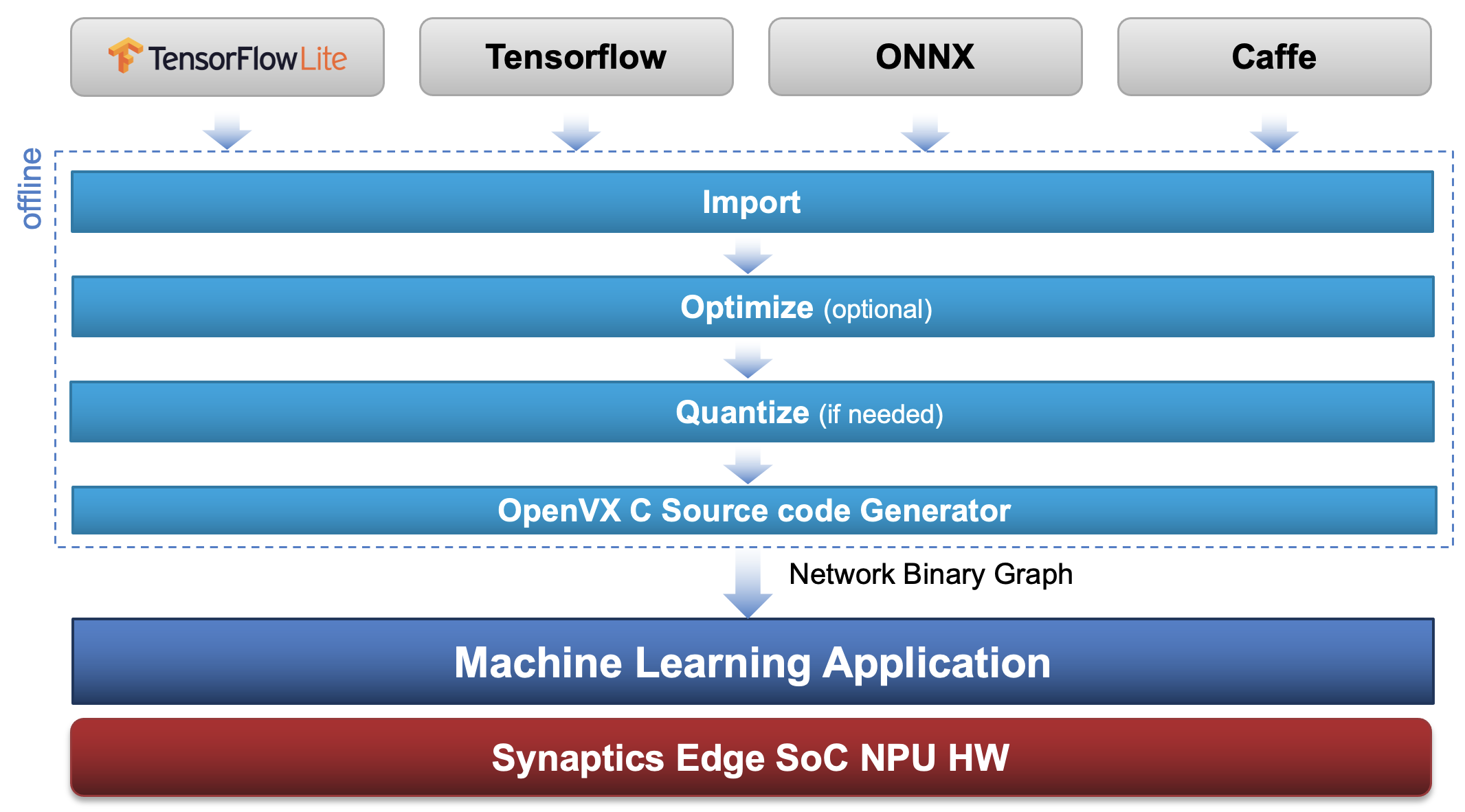介绍
The purpose of SyNAP is to support the execution of neural networks by taking advantage of the available hardware accelerators. The execution of a Neural Network, commonly called an inference or a prediction, consists of taking one or more inputs and applying a neural network to them to generate one or more outputs. Each input and output is represented with an n-dimensional array of data, called a Tensor. Execution takes place inside the Network Processing Unit (NPU) accelerator or in the GPU or directly in the CPU. In order to do this, the network has to be converted from its original representation (e.g. Tensorflow Lite) to the internal SyNAP representation, optimized for the target hardware.
This conversion can occur at two different moments:
at runtime, when the network is going to be executed, by using a just-in-time compiler and optimizer. We call this Online Model Conversion.
ahead of time, by applying offline conversion and optimization tools which generate a precompiled representation of the network specific for the target hardware. We call this Offline Model Conversion.
在线模型转换
Online model conversion allows to execute a model directly without any intermediate steps. This is the most flexible method as all the required conversions and optimizations are done on the fly at runtime, just before the model is executed. The price to be paid for this is that model compilation takes some time (typically a few seconds) when the model is first executed. Another important limitation is that online execution is not available in a secure media path, that is to process data in secure streams.

Online model conversion and execution
离线模型转换
In this mode the network has to be converted from its original representation (e.g. Tensorflow Lite) to the internal SyNAP representation, optimized for the target hardware. Doing the optimization offline allows to perform the highest level of optimizations possible without the tradeoffs of the just-in-time compiler.
In most cases the model conversion can be done with a one-line command using SyNAP toolkit. SyNAP toolkit also supports more advanced operations, such as network quantization and preprocessing. Optionally an offline model can also be signed and encrypted to support Synaptics SyKURETM secure inference technology.
备注
a compiled model is target-specific and will fail to execute on a different hardware

Offline model conversion and execution
NPU硬件能力
The NPU itsef actually consists of multiple units. These units can execute in parallel when possible to reduce inference times as much as possible. Three types of units are available:
Convolutional Core: these units are highly optimized to execute convolutions. Cannot be used to implement any other layer.
Tensor Processor: optimized to execute highly parallel operations, such as tensor-add. The Lite version is similar but supports a reduced operation set.
Parellel Processing Unit: very flexible unit that can be programmed to process tensors with customized kernels. It supports SIMD execution but it is less specialized (so less efficient) than the Neural Network Engine and Parellel Processing Units.
In addition the NPU also contains an internal static RAM which is used to provide fast access to the data and/or weights thus reducing the need to access the slower external memory during processing.

NPU Architecture
The NPU of each SoC differ in the number of units it contains:
SoC
Neural Network Core
Tensor Processor
Parallel Processing Unit
VS640, SL1640
4
2 + 4 Lite
1
VS680, SL1680
22
8
1